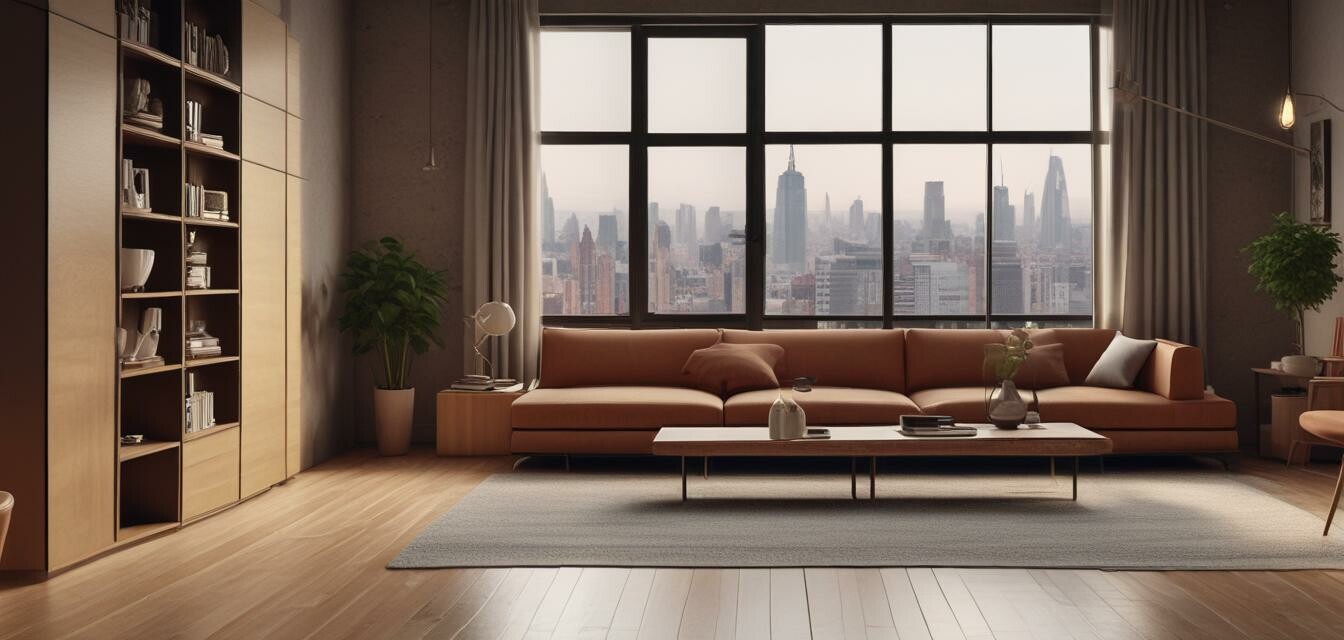
The Impact of Urbanization on Wooden Furniture Design
Key Takeaways
- Urban living spaces are becoming smaller, impacting furniture dimensions and designs.
- Multi-functional and modular wooden furniture is gaining popularity due to space constraints.
- Sustainability is a key trend, with more consumers choosing eco-friendly wood products.
- Modern aesthetics influence the design of wooden furniture, focusing on clean lines and simplicity.
As urbanization continues to reshape living environments, the design of wooden furniture is evolving to meet the needs of city dwellers. This article will explore how the constraints and preferences of urban living spaces are influencing trends in wooden furniture design across major cities.
The Rise of Urban Living Spaces
More people are moving to urban areas, leading to a significant shift in how we utilize space. Apartments are getting smaller, and the demand for efficient use of every square foot is higher than ever. By understanding these trends, furniture designers are adapting their creations to fit the modern urban lifestyle.
Current Trends in Wooden Furniture Design
In recent years, several key trends have emerged in the world of wooden furniture design tailored specifically for urban environments:
| Trend | Description |
|---|---|
| Multi-functional Furniture | Pieces that serve multiple purposes, such as sofas that convert into beds or tables with storage, are essential for small spaces. |
| Modular Designs | Furniture that can be rearranged or expanded allows for adaptability in various living spaces. |
| Sustainable Materials | Consumers are increasingly looking for furniture made from reclaimed or sustainably sourced wood. |
| Minimalistic Aesthetics | Clean lines and simple forms prevail, favoring functionality over excess decoration. |
The Importance of Space-Saving Design
As urban living spaces shrink, the importance of space-saving designs becomes critical. Here are some common types of space-saving wooden furniture:
- Foldable Tables: Tables that can be collapsed or expanded based on need.
- Hidden Storage: Furniture pieces that include compartments for optimal storage, keeping spaces tidy.
- Sofa Beds: A solution for those who host guests without the luxury of extra rooms.
- Corner Units: Utilizing corners effectively allows for maximum use of space.
Urban Furniture and Sustainability
Sustainability has become a significant selling point in the wooden furniture industry. Urban consumers are more conscious about environmental impacts, favoring brands that promote eco-friendly practices. Here’s how this trend is manifested:
- Using reclaimed wood, which not only reduces waste but adds unique character.
- Implementing non-toxic finishes and materials to ensure healthier indoor air quality and minimize environmental harm.
- Encouraging consumers to buy locally-made furniture, reducing transportation emissions.
Urban Design Influences
The design aesthetic of urban areas, ranging from industrial to modern chic, heavily influences wooden furniture designers. The result is a blend of styles, marrying rugged elements with sleek, contemporary lines.
Challenges in Urban Furniture Design
Despite the creative drive spurred by urban living trends, designers face challenges:
- Space Constraints: Balancing form and function is crucial.
- Cultural Preferences: Different urban centers have unique tastes that affect design choices.
- Cost of Materials: Sustainable materials can be more expensive, making eco-friendly options less accessible.
Pros
- Enhances functionality in limited spaces.
- Promotes eco-friendly choices and sustainability.
- Offers unique designs that cater to diverse urban lifestyles.
Cons
- Can be more expensive if made with sustainable materials.
- Limited options can be available due to specific space needs.
The Future of Wooden Furniture in Urban Spaces
Looking ahead, the evolution of wooden furniture design in urban areas appears promising. As cities continue to grow, the demand for innovative and functional designs will drive designers and manufacturers to push the boundaries of what wooden furniture can achieve. Furthermore, trends such as remote working may also influence the necessity for well-designed home office spaces, leading to new creations.
Stay Informed About Trends
To keep yourself updated on the latest trends in wooden furniture design and urban living solutions, check out our blog category on News and Trends. You'll find insights on sustainable practices, innovative designs, and much more!
Conclusion
In conclusion, urbanization significantly impacts wooden furniture design, pushing industry standards toward sustainability, functionality, and adaptability. As designers navigate these changes, they are continually creating pieces that not only enhance the aesthetic of urban homes but also provide essential solutions for modern living challenges.